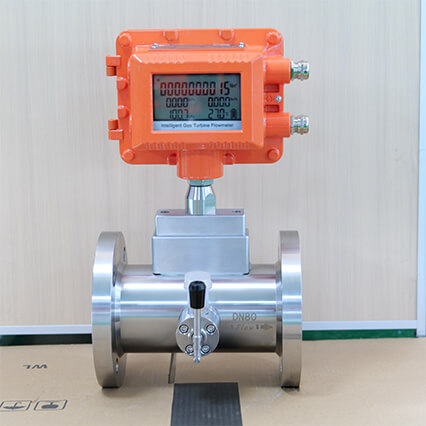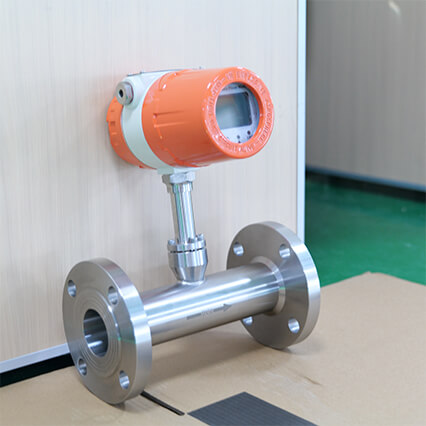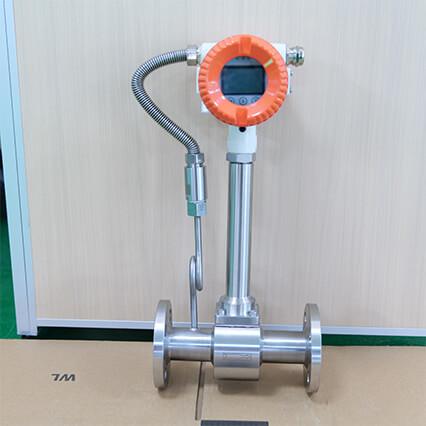Case

Case

Installation issues have different requirements for flow meters with different principles. For some flowmeters, such as differential pressure flowmeters and velocity flowmeters, regulations stipulate that a certain length or longer straight pipe sections must be equipped upstream and downstream of the flowmeter to ensure that the fluid flow in front of the inlet of the flowmeter reaches full development. Other flowmeters, such as volumetric flowmeters and float flowmeters, have no or low requirements on the length of the straight pipe section.
There are also flow meters that have certain errors due to the influence of installation. For example, Coriolis mass flow meters will cause large errors in use due to the influence of installation stress. When problems occur during the use of traceable flow meters, they may not necessarily be due to problems with the flow meter itself. Many problems are caused by poor installation.
Generally, common problems include the following:
① Reverse the inlet side of the differential pressure flow meter orifice plate;
② The flow sensor is installed in a place with a poor flow velocity distribution profile;
③ There are undesirable phases in the pressure pipe connected to the differential pressure device;
④ The flow meter is installed in a harmful environment or an inaccessible place;
⑤ The flow meter is installed in the wrong direction;
⑥ The flow meter or electrical signal transmission line is placed under a strong electromagnetic field;
⑦ Install the flowmeter that is susceptible to vibration interference on a vibrating pipe;
⑧ Lack of necessary protective accessories.



When using the flowmeter, attention should be paid to the adaptability and requirements of the installation conditions, mainly considering the following aspects, such as the installation direction of the flowmeter, the flow direction of the fluid, the configuration of upstream and downstream pipelines, valve positions, protective accessories, pulsating flow Impact, vibration, electrical interference and flow meter maintenance, etc.
When wiring on-site pipelines, attention should be paid to the installation direction of the flow meter. Since the installation direction of the flow meter is generally divided into vertical installation and horizontal installation, there is a difference in flow measurement performance between these two installation methods.
For example, the vertical downward flow of fluid will bring extra force to the flowmeter sensor, which will affect the performance of the flowmeter and reduce the linearity and repeatability of the flowmeter. The installation direction of the flow meter also depends on the physical properties of the fluid. For example, solid particles may precipitate in horizontal pipes, so a flow meter measuring this state is best installed in a vertical pipe.
Some flow meters can only work in one direction, and reverse flow will damage the meter. When using this type of instrument, attention should be paid to whether reverse flow may occur under misoperation conditions, and a check valve should be installed to protect it if necessary. For instruments that can work in both directions, there may be some differences in measurement performance between forward and reverse directions.
Most flow meters are more or less affected by the inlet flow conditions and must ensure good flow conditions. The upstream pipeline layout and flow obstructions will introduce flow disturbances. For example, two (or more) spatial bends will cause vortices, and local flow obstructions such as valves will cause flow velocity distribution distortion. These effects can be ameliorated by providing an appropriate length of upstream straight pipe or by installing a flow regulator.
In addition to considering the pipe fittings immediately before the instrument, attention should also be paid to the combination of several pipe fittings further upstream, as they may be sources of disturbances that are different from those of the closest fittings. Keep the distance between the disturbance-generating parts as much as possible to reduce the impact, and do not connect them close together, as you often see a partially open valve immediately after a single elbow.
There should also be a short section of straight pipe downstream of the instrument to reduce the impact. Air pockets and condensation are often caused by poor piping layout. Drastic changes in pipe diameter or direction should be avoided. Poor piping layout can also create pulsations.
Some types of flowmeters do not have a very wide range of pipe diameters, so being too large or too small will limit the choice of flowmeter varieties. To measure the flow rate of low flow rate or high flow rate, you can choose a flowmeter pipe diameter different from the pipe diameter, and use a reducer to connect it to make the flow meter operate within the specified range. If the flow rate exceeds the range, if the flow rate is too low, the flow meter error will increase and the flow meter will not work. If the flow rate is too high, the flow meter error may also increase. At the same time, the flow sensor will overspeed or the pressure drop will be too large, damaging the flow meter.
Some flowmeters, such as vortex flowmeters with piezoelectric detection components and Coriolis mass flowmeters, are sensitive to mechanical vibration and are easily disturbed by pipeline vibration. Care should be taken to design supports for the pipelines before and after the flowmeter. In addition to using pulsation eliminators to eliminate the effects of pulsation, it is also important to note that all installed flow meters should be away from sources of vibration or pulsation.
The pipelines where the flowmeter is installed are equipped with control valves and isolation valves. To avoid some flow velocity distribution disturbances and cavitations caused by the valves that affect the flowmeter measurement, generally, the control valve should be installed downstream of the flowmeter, and the control valve should be installed at the top of the flowmeter. The back pressure of the flow meter can also be increased downstream to reduce the possibility of air pockets inside the flow meter.
The purpose of installing the isolation valve is to isolate the flow meter from the fluid in the pipeline for easy maintenance. The upstream valve should be sufficiently far away from the flow meter. When the flow meter is running, the upstream valve should be fully open to avoid disturbances such as flow velocity distribution distortion.
At present, most flow measurement systems have electronic equipment, whether it is the flow meter itself or its accessory connections, so the power supply used must be matched with the flow meter. When the flow meter output level is low, a preamplifier adapted to the environment should be used. The output signals of some types of flow meters are easily interfered by high-power switching devices, causing the flow meter output pulse fluctuations and affecting the performance of the flow meter. For example, signal cables should be kept as far away from power cables and power sources as possible to reduce electromagnetic interference and radio frequency interference. Influence.
Installing protective accessories is a protective measure to ensure the normal operation of the flow meter. For example, positive displacement flowmeters and turbine flowmeters generally need to install some necessary equipment such as filters upstream. All this equipment must be installed so as not to affect the use of the flowmeter.
Changes in ambient temperature can affect the electronics and flow sensor portions of the flow meter. For example, temperature changes will affect changes in sensor size, and heat transfer through the flowmeter housing will change fluid density and viscosity. If the ambient temperature exceeds the specification, it will affect the electronic components of the instrument and change the measurement performance.
Therefore, some field instruments need to have an environmentally controlled cover; if the ambient temperature changes affect the flow characteristics, the pipes need to be covered with insulation. In addition, in situations where the environment or medium temperature changes drastically, the impact of the instrument structure material or the layout of the connecting pipes must be fully estimated.
The atmospheric humidity in the environment is also one of the problems that affects the use of flow meters. For example, high humidity will accelerate atmospheric corrosion and electrolytic corrosion and reduce electrical insulation, while low humidity will induce static electricity. Rapid changes in ambient or medium temperature can cause humidity problems, such as surface condensation.
Applied to explosive hazardous environments, instruments are selected according to atmosphere suitability, explosive mixture classification grouping, type of protective electrical equipment, and other safety rules or standards. If there are chemically aggressive gases, the instrument housing should be anti-corrosive and airtight. Some process industries require regular water flushing of the entire device, so the instrument casing is required to be waterproof, and it needs to be dust-tight and water-jet-proof IP65, or even dust-tight and strong water-jet-proof IP66 or dust-tight and water-intrusion grade IP67.
Attention should be paid to the electromagnetic interference environment and various interference sources, such as high-power motors, switching devices, relays, welding machines, radio and television transmitters, etc.